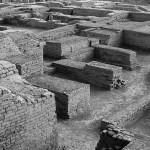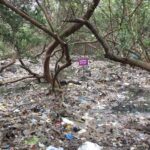IndiaWilds Newsletter Vol. 3 Issue VI
This issue of IndiaWilds Newsletter Vol. 3 Issue VI examines the draft ecotourism guidelines issued by MoEF, controversy regarding Western Ghats as World Heritage Site, Plight of Jarawas and much more. This newsletter is available online. To view and to post your comments check at: http://www.indiawilds.com/diary/indiawilds-newsletter-vol-3-issue-vi
Ecotourism Guidelines
In the month of April 2010 in IndiaWilds Newsletter Vol.2 Issue IV (http://www.indiawilds.com/diary/indiawilds-newsletter-vol-2-issue-iv) I had talked about the need for ecotourism strategy for India, had analysed Botswana’s ecotourism efforts to learn from them.
Finally, a year after we advocated the need for an ecotourism policy, the Ministry of Environment and Forests has come out with a draft of ecotourism guidelines. The Hon’ble Minister for MoEF in his foreword has mentioned that “these guidelines have been developed on the basis of deliberations of a Committee, representations of wildlife experts and tourism practitioners; and with wider consultations from representatives from the conservation and tourism communities”. These words raised my expectations. However, is it good? Is it sufficient? Does it fulfil its promise?
Let’s examine in detail.
Lack of Strategy:
The ministry has created a set of guidelines and put the onus of developing ecotourism plans and execution on the States. The ministry has asked the State Governments to develop a State-level Ecotourism Strategy. Surprisingly, the ministry didn’t think it fit to create an overall ecotourism strategy for India. The MoEF should have created a vision for ecotourism in this country. Unfortunately, neither there is a vision, nor there is a goal. And all that we have is a set of prescriptions.
Management Plans:
If the MoEF with its resources could not create a strategy and detailed action plans, it is anybody’s guess whether the States with varying degrees of interest in the subject would be able to do justice to it. The MoEF has asked for preparation of “site-specific ecotourism plan” for each protected area. When a deadline is given, our forest department officials will definitely make their best effort to create a plan. The question is whether the personnel manning our protected areas are capable enough to create ecologically sound management plans. Unfortunately, a majority of them cannot. And it is not fair to expect them to be able to create ecologically sound management plans apart from doing a good job in protecting the existing wilderness areas.
One can see that in most of our National Parks and Sanctuaries, in the name of better management of the area the first effort goes towards digging new waterholes, building roads and concrete structures in the name of ecotourism huts/rest. Of course it’s another matter that the construction activities also serve as a suitable alibi for corruption.
However, this is not the first time that the MoEF has put the onus of creating management plans on the officials of the protected areas. It had prescribed the same while allowing extraction of bamboo from the forests by local gram sabhas. For more details on the issue you may check here: http://www.indiawilds.com/diary/indiawilds-newsletter-vol-3-issue-iv The MoEF may have shifted the responsibility, however, as a country we don’t stand to gain from such manoeuvring.
Local Conservation Cess:
The idea of imposing a local conservation cess is important, as it is aimed to give something back to the management of the protected area. However, the guidelines have talked about imposing the cess on only private-run tourist facilities within 5 km of the boundary. If a cess is to be imposed, then it should be imposed on all tourist facilities, whether Govt., private sector or joint sector. Any tourist facility leaves behind a footprint, so there should not be any discrimination between private or public tourist facilities.
Financial assistance to individuals for creating forests in their land:
The guidelines have talked about providing financial assistance/ incentives to communities/individuals who own revenue lands outside protected areas so that those can be converted to forest status. According to MoEF “the value of such lands for wildlife will be enhanced, even as it improves the income of the landowner from ecotourism”. I am happy that the MoEF has picked up a good practice. However this requires much more thought and detailed scenario building than has been done.
Unlike US or Africa, where the ranch owners have substantial landholding, in India the landholdings are fragmented and can often be very small. In US, the ranch owners due to their substantial landholding can invite photographers to photograph or film wildlife in their land. In USA, ICF Pro Photo Tour is a highly successful competition where a photographer and a ranch owner pair up and photographs taken from the ranch are entered in the competition. In Africa, large landholdings by private parties known as private conservancies due to better management attract more wildlife. Lot of tourists visit those places year after year and helps the Conservancy earn revenue. In India, due to the small landholdings, it becomes a difficult concept to own. However, I am not sure what would be the benefit of a small landholder in India who has got a few thousand square feet of land on the outskirts of a protected area. Of course, one can always try to bring together all the landowners and the tourist operators to create a workable model. I wish the officials in the MoEF had given more thought to this and created in depth scenarios and come out with solutions.
Existing Tourism facilities:
The point no. 2.2.8 talks stipulates that all facilities within a 5 km radius of a core/critical wildlife habitat/PA/reserve must adhere to all environmental clearances, noise pollution norms, are non-polluting, and blending in with the surroundings.
What about the existing facilities? At present places like Corbett has tourist hotels/resorts blocking the wildlife movements. A number of these facilities have walls/fences blocking the animal movement. Rather than the resorts blending with the surroundings, it has become a city. I wish the MoEF had tackled the issue.
The clause 2.2.9 stipulating complete ban on burying, burning and disposing non-biodegradable or toxic waste in the tourism area is a good move. However, without any detailed thought or mechanism in place, this looks like another grandiose statement. Most of these tourism areas are now large towns and have no waste disposal mechanism whatsoever. Who will tackle this problem?
There is a move to include producer responsibility for the take back and recycling of the goods. Wish more urgency is shown in creating legislations. At times orders from the Apex court like banning sale of Pan Masala in sachets is also going to help. (For details one can check here: http://www.indiawilds.com/forums/showthread.php?t=5563)
Also, there needs to be more self-discipline among resort owners. For example, resorts can move away from bottled water, thereby reducing the amount of garbage as the plastic bottles most of the times are dumped in our wilderness areas.
The ham-handed manner in which the guidelines have been drafted would be crystal clear even to a layman. The point no. 2.2.6 under the heading Protected Area Management reads as follows: “Tourism infrastructure must confirm to environment-friendly, low-impact architecture, including solar energy, waste recycling, rainwater harvesting, natural cross-ventilation, reduced use of asbestos, controlled sewage disposal, and merging with the surrounding habitat”.
The point 2.3.1 under Tourist facilities/ Tour operators reads as follows: “Tourism infrastructure must confirm to environment-friendly, low-impact architecture, renewables including solar energy, waste recycling, rainwater harvesting, natural cross-ventilation, no use of asbestos, controlled sewage disposal, and merging with the surrounding landscape”.
Needless to say that the point 2.3.1 and 2.2.6 are same except for inclusion of the word “renewables” and the words “reduced” and “habitat” changed to “no” and “landscape” respectively in the clause 2.3.1
In his foreword to the draft Ecotourism guidelines, the Hon’ble Minister has admitted that this is long overdue. From that perspective, releasing the ecotourism guidelines may be an effort to make a start. However, this seriously falls short of the needs of India Today.
It would be important to undertake an envisioning exercise to create an overall ecotourism Vision and Strategy for India and then move in to create detailed plans. In the absence of this, asking the States to create an ecotourism strategy not only puts burden on the individual states, but also runs the risk of each state pulling in different directions which would be detrimental. If a small country like Botswana can create a detailed and effective ecotourism strategy and action plan, I am sure the MoEF can certainly create a good one too.
UNESCO World Heritage Sites
A controversy in India is raging around the UNESCO (United Nations Educational, Scientific and Cultural Organization) World Heritage convention is being held in Paris till 29th of June, 2011. The World Heritage committee examines sites from across the world to determine whether their cultural and natural heritage is of outstanding significance so as to protect those sites as a part of world heritage of mankind. Considering that these sites are irreplaceable and that at times individual nations may not have the resources or scientific wherewithal to protect these sites, support is provided to protect these World Heritage sites.
The signatories to the UNESCO World Heritage Convention are required to identify and delineate the different properties situated in their territories; protect and conserve those for future generations. The ownership of the World Heritage Site doesn’t change and rests with the country. After the identification of the site by the country, the World Heritage committee examines the sites and decides whether it is worthy of inclusion in the World Heritage Site list.
The Western Ghats was identified for inclusion in the world heritage site list. There had been discussions with the states of Tamil Nadu, Karnataka, Kerala and Maharashtra and their consent were taken and accordingly the Wildlife Institute of India had selected 39 sites in the Western Ghats. Unfortunately, just before the World Heritage Convention, the Government of Karnataka has decided to attack this decision and wants that the Western Ghats should not get the World Heritage Site notification.
The Karnataka Forest Minister Shri C H Vijayshankar has said that inclusion in the World Heritage Site would lead to loss of sovereignty over the sites. I wish he was properly briefed. However, according to news report in Deccan Herald the Hon’ble Minister for MoEF Shri Jairam Ramesh has said “The Karnataka Government’s opposition to get UNESCO heritage tag to the Western Ghats is giving wide scope to suspect that it is yielding to the pressure from vested interests like forest encroachers, mining, timber smugglers and poachers”.
With the World Heritage Committee not agreeing to the inclusion of the Western Ghats in this year’s list, this may again be taken up in the Convention in Bangkok. It has been reported that IUCN was keen on Prof. Madhav Gadgil’s report and in its absence had given a negative recommendation to the WHC regarding inclusion of Western Ghats. With Prof. Madhav Gadgil reportedly wanting implementation of the “Forest Rights Act” before nomination of Western Ghats, the controversy is far from over. For further details you may check here: http://www.indiawilds.com/forums/showthread.php?t=7004
The Plight of Jarawas
Ever seen man going on a safari to see another man? Well, that is what happens when the Andaman Trunk Road cuts through the forests inhabited by Jarawas – a self- sufficient tribe living without any contact with the outside world – and people throng to see them. There was a time when the Jarawas avoided outside contact and were even known to be hostile to such attempts. Over a period of time, due to the many inducements provided to the Jarawas by the district administration and other people, the Jarawas have got used to the fruits and clothes etc left behind for them. Now one can see the sad sight of Jarawas begging.
There has been a case against the Andaman Trunk Road and the Hon’ble Supreme Court had ordered the closure of the road. Unfortunately, the ANI Administration hasn’t implemented the court order.
The number of settlers/population in the islands have been increasing and naturally there is pressure on the administration from various sources to keep the road running through the reserve in gross contempt of the Apex Court’s orders.
There is a school of thought who want the Jarawas to be assimilated within the modern society. Perhaps the most vocal of this school of thought is the local Member of Parliament Shri Bishnu Pada Ray who advocated taking away the children of Jarawas and putting them in schools. Several decades back, Australia had committed such a crime on its aborigines and had taken away their children and brought them up in “white” households. It took nearly 80 years for the Australian Prime Minister to realise the mistake and apologise. I am sure our Government will not lose its sanity.
At present, there is been a subtle approach in “assimilating” the Jarawas into the mainstream. The proponents of this approach want to seek the opinion of the Jarawas whether they want to remain isolated or not. This is akin to asking a primary school kid about their future, as the Jarawas have no knowledge about the vices of the modern society. The proponents of this approach seem to forget that this increases more contact with the Jarawas increasing their vulnerability to diseases. There has been conflicting reports that the National Advisory Council (NAC) too has advised the Ministry of Tribal Affairs that they should seek the views of the Jarawas. I hope better sense prevails and the Ministry of Tribal Affairs decides to leave the Jarawas alone and ensures the closure of the Andaman Trunk Road.
With each passing day, the self-sufficient and independent Jarawas are slowly being pulled into the maelstrom of modern society. Their future is increasingly looking bleak. In the battle for survival, these sons of lesser God’s are soon going to be trampled under our relentless march towards the so called development. For further details please check here:
http://www.indiawilds.com/forums/showthread.php?p=34264#post34264
Culling orders on Wild Boars in Kerala
Kerala has done it again. In 2009, the Kerala Government had ordered culling of cormorants alleging that the cormorants are leading to depletion of fish. Fortunately, after the huge number of petitions filed, the Government had stopped that order. Further details can be found here: http://www.indiawilds.com/forums/showthread.php?t=1877
The new Government in Kerala headed by Shri Oomen Chandy in the Cabinet meeting has decided to grant permission to kill Wild Boars (Sus scrofa) in the pretext of crop damage. For further details you may check here:
http://www.indiawilds.com/forums/showthread.php?t=6991
Please register your protest by writing to the Hon’ble Chief Minister of Kerala. In a democracy public opinion matters. So please write emails, letters, faxes requesting the Hon’ble Chief Minister to intervene. I am sure wise counsel will prevail.
Email: cmkerala@vsnl.net.in
Postal address:
Chief minister of Kerala,
Cliff House, Nathancode,
Thiruvananthapuram 1
Tel:0471-2333812
Fax: 0471-2333489
Wildlife Photography:
Images shared by our members between 10th May 2011 – 9th June, 2011 that depict interesting animal behaviour or are just plain beautiful.
Eyes by Amit Kalele
http://www.indiawilds.com/forums/showthread.php?t=6832
Lazy Leopard stretch by Praveen Siddannavar
http://www.indiawilds.com/forums/showthread.php?t=6765
Ascending order by Dipankar Mazumdar
http://www.indiawilds.com/forums/showthread.php?t=6845
Jungle Cat by Mrudul Godbole
http://www.indiawilds.com/forums/showthread.php?t=6721
Little Stint by Tejas Soni
http://www.indiawilds.com/forums/showthread.php?t=6869
Vibgyor by Subramanniyan Mani
http://www.indiawilds.com/forums/showthread.php?t=6696
Streakthroated woodpecker Female by Praveen Siddannavar
http://www.indiawilds.com/forums/showthread.php?t=6813
Tube Dwelling Sea Anemone by Vishal Bhave
http://www.indiawilds.com/forums/showthread.php?t=6713
Monster Meal by Abhishek Jamalabad
http://www.indiawilds.com/forums/showthread.php?t=6831
Lonely by Jitendra Katre
http://www.indiawilds.com/forums/showthread.php?t=6807
I look forward to your inputs and your support in preserving the last tracts of wilderness and wildlife left in this beautiful country. For other interesting articles and photographs please check:
http://www.indiawilds.com/forums/
The link to this Newsletter is available at:
All the newsletters can be found online at: http://www.indiawilds.com/diary/category/newsletter
In case, anyone of you has forgotten his/her user id and password can email the admin at the following email id administrator@indiawilds.com Others may register at www.indiawilds.com/forums/register.php
Regards,
Sabyasachi Patra
www.indiawilds.com
Profile: http://www.indiawilds.com/profile.htm
Contact: http://www.indiawilds.com/contact%20us.htm
Facebook: http://www.facebook.com/pages/IndiaWilds/132629240481
- GoPro Hero 12 Black - 6 September,2023
- Leopards: The Last Stand - 2 July,2023
- Drifting in the Waters of Sundarbans - 26 March,2023











